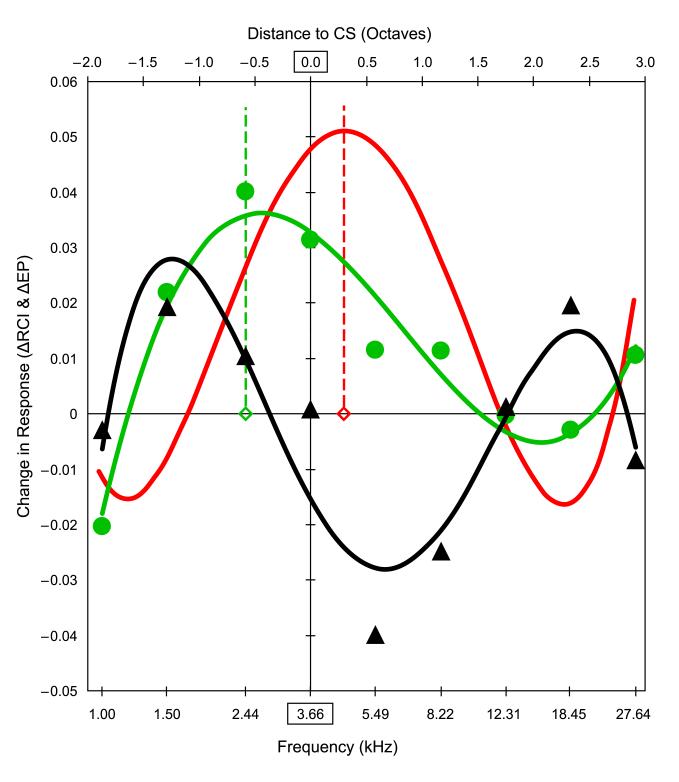Fig. 7.
Inhibitory gradient as a mechanism of behavioral peak shift. A normalized linear algebraic summation model was used to estimate the degree to which the neural gradient might be able to account for the behavioral peak shift. The ΔFGG for the peak shift (Figs. 5B, 6B) was best fit with a 3rd order polynomial (green curve): y = 0.0052x3 − 0.0125x2 − 0.0144x + 0.0327; r = 0.97, p(ν=7) < 0.001. The neural gradient was best fit as a Gabor function with a 4th order polynomial (black curve): y = −0.0046x4 + 0.011x3 + 0.02x2 − 0.0358x − 0.0154; r = 0.91, p(ν=7) < 0.001. To estimate the extent to which the neural gradient could account for the peak shift, it was subtracted from the behavioral function. As direct subtraction could not be done because the two functions had no common scale, values were normalized to percent of change based on the range of values within each function, which was assigned a value of 100%. (The behavioral data (ΔRCI) range was maximum around 2.44 kHz and minimum around 18.45 kHz. The neural data (difference in P2 amplitude Day 2 minus Day 1) range was maximum around 18.50 Hz and minimum around 5.49 kHz). The neural function was then algebraically subtracted from the peak shift function to remove its effect on the latter. Finally, the corrected behavioral function was re-coded into actual units of ΔRCI, to yield an estimate of the behavioral gradient that would have been shifted by the neural gradient: y = 0.0045x4 − 0.0056x3 − 0.0322x2 + 0.0208x + 0.0478 (red curve). Note that this completely eliminated the peak shift. In fact, the compensation for the neural gradient actually moved the peak-shifted function beyond the CS frequency (vertical line). The peak-shift had been displaced from the CS by 0.58 octaves. (vertical green dashed line). Compensating for the neural gradient eliminated this and moved the peak of the estimated ΔFGG beyond the CS by 0.30 octaves (vertical red dashed line). See text.

